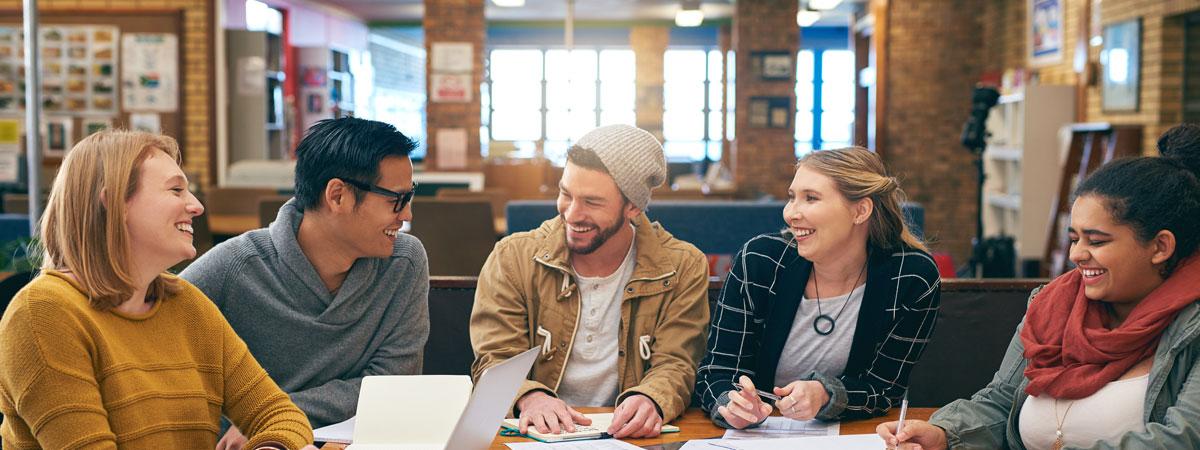
In the realm of education, collaborative learning has proven to be a powerful tool for student engagement and growth. By fostering teamwork, critical thinking, and communication skills, educators can create an environment that promotes active learning and knowledge retention.
This article explores ten successful collaborative learning methods that every educator should be aware of. From group projects to project-based learning, these methods offer a variety of strategies to enhance the learning experience and empower students to become active participants in their own education.
Group Projects
One effective way to foster collaborative learning in the classroom is through the implementation of group projects. Group projects promote cooperative learning by encouraging students to work together towards a common goal. This approach not only enhances teamwork dynamics but also cultivates essential skills such as communication, problem-solving, and critical thinking.
By working in teams, students can share their knowledge and expertise, learn from one another, and develop a deeper understanding of the subject matter. Additionally, group projects provide an opportunity for students to take ownership of their learning, as they are actively engaged in the process of planning, executing, and presenting their work.
This active participation fosters a sense of freedom and autonomy, empowering students to take charge of their education and collaborate effectively with their peers.
Jigsaw Method
The Jigsaw Method is a structured cooperative learning technique that promotes active engagement and knowledge sharing among students. This method involves dividing students into small groups, where each group is responsible for mastering a specific topic or piece of information.
Here are some benefits of using the Jigsaw Method:

- Encourages collaboration: Students work together to gather and share information, fostering teamwork and cooperation.
- Promotes individual accountability: Each student has a unique role and is responsible for mastering their assigned topic, ensuring active participation.
- Enhances critical thinking skills: Students must analyze and synthesize information from different sources to understand the complete picture.
- Increases engagement: The interactive nature of the Jigsaw Method keeps students actively involved in the learning process.
- Develops communication skills: Students must effectively communicate their findings to their peers, improving their ability to articulate and convey information.
To ensure successful group projects using the Jigsaw Method, consider the following tips:
- Establish clear expectations and roles for each student.
- Provide guidance and resources for research and information gathering.
- Encourage active listening and respectful communication within the groups.
- Monitor and provide feedback to ensure each group member understands their assigned topic.
- Promote reflection and discussion among the entire class to consolidate learning.
Learning Circles
Continuing the exploration of effective collaborative learning methods, the next subtopic to be discussed is the concept of Learning Circles.
Learning Circles are small groups of students who come together to engage in collaborative learning activities. These circles provide a supportive and interactive learning environment where students can learn from each other through discussions, collaborative assessment, and problem-solving.
The main goal of Learning Circles is to foster deep understanding and critical thinking skills through the exchange of ideas and perspectives. In Learning Circles, students work together to explore complex topics, share their knowledge, and reflect on their learning.
Interactive discussions allow students to actively participate and contribute to the learning process, promoting a sense of ownership and engagement. This collaborative approach encourages students to learn from one another, building a strong classroom community and enhancing their overall learning experience.
Think-pair-share
Think-pair-share is a collaborative learning method that encourages active participation and engagement among students. This technique involves three distinct steps:
- Think: Students are given a question or problem to think about individually. This step allows them time to reflect and generate their own ideas.
- Pair: After the thinking phase, students are paired up with a partner to share their thoughts and ideas. This promotes discussion and collaboration, as students learn from each other's perspectives.
- Share: Finally, the pairs share their collective ideas with the rest of the class. This step encourages participation and allows for a broader range of ideas to be discussed.
Reciprocal Teaching
Reciprocal teaching is an effective collaborative learning method that builds upon the active participation and engagement fostered by think-pair-share. It involves four main strategies: summarizing, questioning, clarifying, and predicting. In this method, students take turns assuming the role of the teacher, guiding their peers through a text or topic.

Interactive questioning is a key component of reciprocal teaching, as it encourages students to actively engage with the material and develop critical thinking skills. Peer tutoring is another crucial aspect of this approach, as it allows students to support and learn from each other.
Reciprocal teaching promotes a deeper understanding of the subject matter, enhances communication and collaboration skills, and fosters a sense of ownership and responsibility in students' learning process.
Fishbowl Discussions
Fishbowl discussions are an effective collaborative learning method that can benefit both students and educators. These discussions involve a small group of students engaging in a conversation while the rest of the class observes.
This method promotes active listening, critical thinking, and respectful dialogue, making it a valuable tool for facilitating meaningful discussions in the classroom.
Benefits of Fishbowl Discussions
One of the most effective methods for promoting active participation and deep learning in collaborative learning environments is through the utilization of structured discussions where a small group of students engage in a focused conversation while the rest of the class observes. Fishbowl discussions, as they are commonly known, offer several benefits that enhance the learning experience for students:
- Increased engagement: Fishbowl discussions require active involvement from both the participants and the observers, creating a dynamic learning environment.
- Enhanced critical thinking: Through Socratic questioning, students are encouraged to think deeply, analyze perspectives, and evaluate evidence.
- Improved communication skills: Fishbowl discussions provide opportunities for reflective listening, allowing students to practice active listening and thoughtful responses.
- Greater understanding of different viewpoints: By observing the conversation, students gain exposure to diverse ideas and opinions, fostering empathy and tolerance.
- Development of teamwork and collaboration: Fishbowl discussions promote cooperation, as participants must work together to maintain a productive conversation.
Tips for Facilitating Fishbowl Discussions
To effectively facilitate fishbowl discussions, educators can employ various strategies to ensure productive and engaging conversations.
One important tip is to encourage participation from all students. This can be achieved by setting clear expectations at the beginning of the discussion and creating a safe and inclusive environment where students feel comfortable sharing their thoughts and ideas.

Another key strategy is to promote active listening. Educators can model active listening behaviors, such as maintaining eye contact, nodding, and asking follow-up questions, to encourage students to listen attentively to their peers.
Additionally, it can be helpful to provide prompts or guiding questions to keep the discussion focused and ensure that all aspects of the topic are explored.
Peer Review
The implementation of peer review in collaborative learning environments is an essential strategy for promoting critical thinking and constructive feedback among students. Peer review allows students to engage in the process of evaluating their peers' work, providing valuable insight and suggestions for improvement. This method not only encourages students to think critically about the work of their peers but also helps them develop their own skills in self-assessment.
Here are five key benefits of incorporating peer review in collaborative learning:
- Encourages active engagement and participation among students
- Fosters a sense of responsibility and accountability for one's own work
- Promotes effective communication and collaboration skills
- Provides diverse perspectives and alternative solutions to problems
- Enhances students' ability to provide and receive constructive feedback
Project-Based Learning
Project-Based learning is an increasingly popular approach to education, often implemented with a high frequency in professional settings. This method involves students working on extended projects that require them to apply their knowledge and skills in real-world scenarios.
By engaging in project-based learning, students not only gain a deeper understanding of the subject matter but also develop valuable skills such as critical thinking, problem-solving, and project management. The projects are often interdisciplinary and allow students to work collaboratively, encouraging teamwork and communication.
This approach also fosters a sense of autonomy and freedom as students have the opportunity to explore their own interests and take ownership of their learning. By providing real-world application and promoting active engagement, project-based learning prepares students for success in their future careers.

Collaborative Writing
How can educators effectively utilize collaborative writing to enhance student learning and develop essential skills in a professional setting?
Collaborative writing is a powerful tool that allows students to work together, share ideas, and develop their writing skills in a collaborative and interactive environment. Here are five ways educators can effectively utilize collaborative writing:
- Online forums: Create online forums where students can post their writing and receive feedback from their peers.
- Peer editing: Encourage students to peer edit each other's work, providing constructive criticism and suggestions for improvement.
- Group projects: Assign writing tasks that require students to work together in groups, fostering collaboration and the exchange of ideas.
- Interactive exercises: Incorporate interactive writing exercises that require students to collaborate in real-time, such as co-authoring a document or creating a story together.
- Real-world applications: Connect collaborative writing assignments to real-world scenarios, allowing students to see the practical value of their writing skills.
Role Play
Collaborative writing is just one example of successful methods educators can utilize to enhance student learning and develop essential skills; another effective approach is engaging students in role play activities.
Role play allows students to actively participate in simulated scenarios, taking on different roles and perspectives. It promotes critical thinking, communication, and problem-solving skills, as students collaborate to navigate through the challenges presented in the scenario.
Through role play, students can explore real-world situations, experiment with different solutions, and learn from their mistakes in a safe and supportive environment. This method encourages creativity, empathy, and adaptability, as students are required to think on their feet and respond to unexpected situations.
Role play also fosters collaboration and teamwork, as students work together to achieve a common goal. Overall, role play is a powerful tool for collaborative problem solving and fostering a deeper understanding of complex concepts.
Frequently Asked Questions
How Can Educators Effectively Assess Individual Student Contributions in a Group Project?
In order to effectively assess individual student contributions in a group project, educators should consider assessing engagement levels and observing group dynamics. This will allow for a comprehensive evaluation of each student's involvement and contribution to the project.

What Are Some Potential Challenges or Drawbacks of Using the Jigsaw Method in a Classroom Setting?
Potential challenges and drawbacks of using the jigsaw method in a classroom setting include a lack of accountability, as individual student contributions may be difficult to assess, and potential issues with time management.
How Can Educators Ensure Equal Participation and Engagement in Learning Circles?
To ensure equal participation and engagement in learning circles, educators can implement strategies such as establishing clear expectations, promoting active listening and communication skills, providing opportunities for all students to contribute, and using diverse group roles and structures.
What Strategies Can Be Used to Encourage Active Participation and Thoughtful Sharing During Think-Pair-Share Activities?
To encourage active participation and thoughtful sharing during think-pair-share activities, educators can employ strategies such as active listening to ensure all students are engaged, and questioning techniques to facilitate deeper discussions and critical thinking.
How Can Reciprocal Teaching Be Adapted for Online or Remote Learning Environments?
Reciprocal teaching, a collaborative learning method, can be adapted for online or remote learning environments through various strategies. These include using video conferencing platforms, online discussion boards, and shared documents to facilitate student engagement and interaction.
 Family Craft ProjectsHome ImprovementCooking and BakingReuse and RecycleDIY GiftsEco-Friendly ProjectsDIY Home SolutionsSeasonal ActivitiesFun and GamesLearn TogetherPrivacy PolicyTerms And Conditions
Family Craft ProjectsHome ImprovementCooking and BakingReuse and RecycleDIY GiftsEco-Friendly ProjectsDIY Home SolutionsSeasonal ActivitiesFun and GamesLearn TogetherPrivacy PolicyTerms And Conditions
